This website uses cookies
We use cookies to personalise content and ads, to provide social media features and to analyse our traffic. We also share information about your use of our site with our social media, advertising and analytics partners who may combine it with other information that you’ve provided to them or that they’ve collected from your use of their services.
Cookie Policy
What are cookies?
A cookie is a small text file that a website stores on your computer or mobile device when you visit the site.
- First party cookies are cookies set by the website you're visiting. Only that website can read them. In addition, a website might potentially use external services, which also set their own cookies, known as third-party cookies.
- Persistent cookies are cookies saved on your computer and that are not deleted automatically when you quit your browser, unlike a session cookie, which is deleted when you quit your browser.
Every time you visit our websites, you will be prompted to accept or refuse cookies. The purpose is to enable the site to remember your preferences (such as user name, language, etc.) for a certain period of time. That way, you don't have to re-enter them when browsing around the site during the same visit.
Cookies can also be used to establish anonymised statistics about the browsing experience on our sites.
How do we use cookies?
Currently, there are four types of cookies that may be generated as you browse our site: Strictly Necessary, Statistics, Preference and Marketing cookies.
1. Strictly Necessary Cookies
These cookies are essential for you to browse the website and use its features, such as accessing secure areas of the site. Cookies that allow web shops to hold your items in your cart while you are shopping online are an example of strictly necessary cookies. These cookies will generally be first-party session cookies. While it is not required to obtain consent for these cookies, what they do and why they are necessary are explained in the table below.
How do I control Strictly Necessary Cookies?
You can use your browser settings to control whether or not we set session cookies. More information on your browser settings is provided at the bottom of this page.
Please be aware that these cookies are critical to the efficient working of the site. If you choose to disable these cookies from this site, the functionality of the site may be greatly reduced.
2. Statistics Cookies
Also known as "performance cookies," these cookies collect information about how you use a website, like which pages you visited and which links you clicked on. None of this information can be used to identify you. It is all aggregated and, therefore, anonymized. Their sole purpose is to improve website functions. This includes cookies from third-party analytics services as long as the cookies are for the exclusive use of the owner of the website visited.
Statistical information is used in reports and to improve our site. For example, we have used analytics data to add, remove or change features of the site based on how popular they are with users.
We track, for example:
- the numbers of visitors to individual pages;
- when pages were visited;
- how long users stayed on the page;
- the IP address of the user of the website;
- the page they came from;
- technical data about the device being used to browse the site (such as browser and operating system version, and display size) — we use this data to ensure that the technology our site uses is appropriate for the majority of our users, and how best to display the site for users who have less capable browsers.
More information about Statistics cookies
We use cookies from different partners including Google to provide our analytics data. You can read more about how Google Analytics treats your data on their web site. You can also read Google's full privacy policy.
How do I control Statistics cookies?
Google provides a tool to opt-out of Google Analytics. This is available for all modern browsers in the form of a browser plugin. Additionally, you can control how cookies are set using your browser settings.
3. Preference cookies
Also known as "functionality cookies," these cookies allow a website to remember choices you have made in the past, like what language you prefer, whether you have accepted our cookie policy, what region you would like weather reports for, or what your user name and password are so you can automatically log in.
4. Marketing cookies
The advertisements you see displayed on this, and other, sites are generated by third parties. These services may use their own anonymous cookies to track how many times a particular ad has been displayed to you and may track your visits to other sites where their ads are displayed. Please note that advertisers can only track visits to sites which display their ads or other content. This tracking is anonymous, meaning that they do not identify who is viewing which ads.
Tracking in this manner allows advertisers to show you ads that are more likely to be interesting to you, and also limit the number of times you see the same ad across a wide number of sites. As an example of how advertisers operate, if you recently researched holidays, adverts for holiday operators may subsequently appear on our sites.
We do not have access to, or control over, these third party cookies; nor can we view the data held by these advertisers. Online advertisers provide ways for you to opt-out of your browsing being tracked. More information about the advertisers we use, and how to opt-out, is provided below.
Youtube
We display clips from Youtube related to our purchase opportunities. You can view Youtubes's privacy policy on their website. This page also allows you to control what cookies YouTube saves on your computer.
We work with Google to optimise how Google ads are displayed. You can discover how Google protects your privacy relating to ads at its privacy policy.
Cookie Table of our cookies
Cookies you may see used on konvi.app
| Cookie name | Default expiration time | Purpose | Description |
|---|---|---|---|
| _fbp | 3 months | Marketing cookies | Facebook: to store and track visits across websites. |
| _ga | 2 years | Statistics cookies | Google Analytics: to store and count pageviews. |
| _gat_UA-* | 1 minute | Statistics cookies | Google Analytics: functional |
| _gid | 1 day | Statistics cookies | Google Analytics: to store and count pageviews. |
| _iub_cs-* | 1 year | Preferences cookies | iubenda: to store cookie consent preferences. |
| euconsent-v2 | 1 year | Preferences cookies | To store cookie consent preferences. |
| referrerReferralId | 1 browser session | Strictly necessary cookies | Track user referrals |
| t_gid | 1 year | Marketing cookies | Taboola: assigns a unique User ID that allows Taboola to recommend specific advertisements and content to this user |
| APISID | 2 years | Marketing cookies | Youtube: Google Ads Optimization |
| HSID | 2 years | Marketing cookies | Youtube: to provide fraud prevention |
| LOGIN_INFO | 2 years | Marketing cookies | Youtube: to store and track visits across websites. |
| PREF | 2 years | Marketing cookies | Youtube: to store and track visits across websites. |
| SAPISID | 2 years | Marketing cookies | Youtube: Google Ads Optimization |
| SID | 2 years | Marketing cookies | Youtube: to provide ad delivery or retargeting, provide fraud prevention. |
| SIDCC | 1 year | Marketing cookies | Youtube: to provide ad delivery or retargeting, provide fraud prevention. |
| SSID | 2 years | Marketing cookies | Youtube: to provide ad delivery or retargeting, provide fraud prevention. |
| VISITOR_INFO1_LIVE | 1 year | Strictly necessary cookies | Youtube: to provide bandwidth estimations. |
| YSC | 1 browser session | Marketing cookies | Youtube: to store a unique user ID. |
| __Secure-1PAPISID | 2 years | Marketing cookies | Youtube: Google Ads Optimization |
| __Secure-1PSID | 2 years | Marketing cookies | Youtube: to provide ad delivery or retargeting, provide fraud prevention. |
| __Secure-3PAPISID | 2 years | Marketing cookies | Youtube: Google Ads Optimization |
| __Secure-3PSID | 2 years | Marketing cookies | Youtube: to provide ad delivery or retargeting, provide fraud prevention. |
| __Secure-3PSIDCC | 1 year | Marketing cookies | Youtube: to provide ad delivery or retargeting, provide fraud prevention. |
| IDE | 1.5 years | Marketing cookies | doubleclick: serving targeted advertisements that are relevant to the user across the web. |
| RUL | 1 year | Marketing cookies | doubleclick: serving targeted advertisements that are relevant to the user across the web. |
| variant | 1 browser session | Strictly necessary cookies | For providing targeted content to users |
| cookie_consent | 1 year | Strictly necessary cookies | For persisting cookie consent |
| 1P_JAR | 1 month | Marketing cookies | Google: optimize advertising, to provide ads relevant to users |
| NID | 1 month | Marketing cookies | Google: to provide ad delivery or retargeting, store user preferences |
Removing cookies from your device
You can delete all cookies that are already on your device by clearing the browsing history of your browser. This will remove all cookies from all websites you have visited.
Be aware though that you may also lose some saved information (e.g. saved login details, site preferences).
Managing site-specific cookies
For more detailed control over site-specific cookies, check the privacy and cookie settings in your preferred browser
Blocking cookies
You can set most modern browsers to prevent any cookies being placed on your device, but you may then have to manually adjust some preferences every time you visit a site/page. And some services and functionalities may not work properly at all (e.g. profile logging-in).
Further help
If you still have any concerns relating to our use of cookies, please contact us at support@konvi.app
Investing in Ancient Chinese Artefacts: History, Value, and Market Trends
Nikkan Navidi•4.7.2025
Ancient China’s history is among the richest and most enduring in the world. Spanning millennia, the country witnessed the rise and fall of powerful dynasties, each leaving behind a legacy of art, craftsmanship, and cultural refinement that continues to captivate scholars, collectors, and investors alike.
From the intricate porcelain of the Ming dynasty to the imperial jade carvings of the Qing, Chinese artefacts represent not just material objects but cultural narratives that embody philosophical traditions, technological innovation, and societal values. These works of art offer a window into an empire that prized aesthetics, symbolism, and precision, values that remain deeply resonant today.
The global fascination with Chinese antiquities has only grown in recent decades. International auction houses, museums, and private collectors compete to secure rare, authenticated pieces that carry both historical weight and artistic merit. For investors, these artefacts offer more than visual appeal; they represent scarce cultural heritage that can appreciate in value over time, making them a compelling addition to a diversified portfolio.
As Konvi launches the second part of its Empire Series, focusing on Ancient Chinese artefacts, this article explores why these cultural treasures continue to command such respect in global markets, the factors that shape their value, and the careful due diligence required to invest responsibly in this timeless asset class.
The Historical Legacy of Ancient Chinese Dynasties
China’s history is marked by the rise and fall of influential dynasties, each contributing distinct artistic styles, technological advancements, and cultural practices. Understanding these dynastic periods is essential for appreciating the value of ancient artefacts and their enduring appeal to collectors.
The Significance of Dynasties
- Han Dynasty (206 BCE–220 CE): Known for early imperial consolidation, advanced metallurgy, and funerary objects such as jade burial suits and intricate bronze mirrors.
- Tang Dynasty (618–907): Celebrated for cultural cosmopolitanism, trade on the Silk Road, and iconic sancai-glazed pottery, as well as Buddhist-inspired sculpture.
- Song Dynasty (960–1279): Renowned for understated elegance, landscape painting, and high-fired celadon and Ding porcelains that influenced East Asian aesthetics for centuries.
- Ming Dynasty (1368–1644): Famous for its blue-and-white porcelain, marked by technical mastery and artistic detail, often regarded as the pinnacle of ceramic production.
- Qing Dynasty (1644–1912): The last imperial dynasty, known for refined jade carvings, cloisonné enamel, and polychrome famille rose porcelains prized by global collectors.
Uses, Functions, and Cultural Significance of Ancient Chinese Artefacts
Artefacts across Chinese dynasties served varied and significant purposes, from ritual vessels used in ancestor worship to finely crafted porcelain reserved for imperial courts and diplomatic exchange. Jade burial items were designed to protect the dead in the afterlife, while sancai-glazed ceramics and Buddhist sculptures highlighted cultural exchange along the Silk Road. Such objects were not simply decorative but integral to political legitimacy, religious practice, and elite identity. For collectors and investors, this rich functional history adds layers of provenance and narrative value that drive demand and sustain prices in a competitive market focused on authenticity and cultural storytelling.
Art as a Marker of Prestige
Throughout history, Chinese emperors and elites commissioned exquisite objects to demonstrate power, sophistication, and devotion to cultural ideals. These items were not mass-produced but crafted with exceptional skill and care, intended to serve as heirlooms, ceremonial gifts, or diplomatic tributes.
One of the most famous patrons was Emperor Qianlong of the Qing Dynasty (ruled 1735–1796), who amassed vast collections and personally inscribed artworks to mark imperial ownership. His passion for collecting elevated standards of craftsmanship and led to a flourishing of techniques such as famille rose enamelling and intricate jade carving. While these acts reinforced Qing cultural dominance, they also fixed Qianlong's legacy as a discerning but sometimes overzealous collector, known for leaving marks on older masterpieces.

For the art market, his reign created an enduring demand for objects bearing imperial marks and connections. Pieces commissioned or collected during the Qianlong era are highly valued today for their technical excellence, historical significance, and clear provenance, making them sought-after trophies in auctions and museum collections alike.
The Role of Culture and Philosophy
Chinese artefacts often embody core philosophical and religious traditions, which directly influence their form, symbolism, and value. Confucian ideals of hierarchy and harmony appear in ancestral tablets, ritual bronzes, and calligraphy, underscoring their use in state ceremonies and elite households. Buddhist influence is evident in gilt bronzes, devotional sculptures, and silk paintings, which spread across dynasties and regions. These layers of meaning add to an artefact’s provenance and collector appeal, making pieces with clear cultural and philosophical significance especially prized in both museum collections and private markets.
Mythology and Symbolism in Chinese Artefacts
Chinese artefacts often feature mythological and symbolic motifs that added layers of meaning and status. Dragons (loong), phoenixes (Fenghuang), and qilin were imperial symbols representing power, prosperity, and virtue, frequently appearing on robes, bronzes, and porcelain intended for court use. Daoist and Buddhist mythology shaped devotional sculpture and ritual objects, from guardian lions to representations of deities and immortals. These symbols were not purely decorative but carried specific cultural and spiritual significance, reinforcing the owner's social rank or religious devotion. For today’s collectors, such mythological imagery adds provenance, cultural depth, and narrative value, making well-preserved examples with clear symbolism especially desirable in the market.
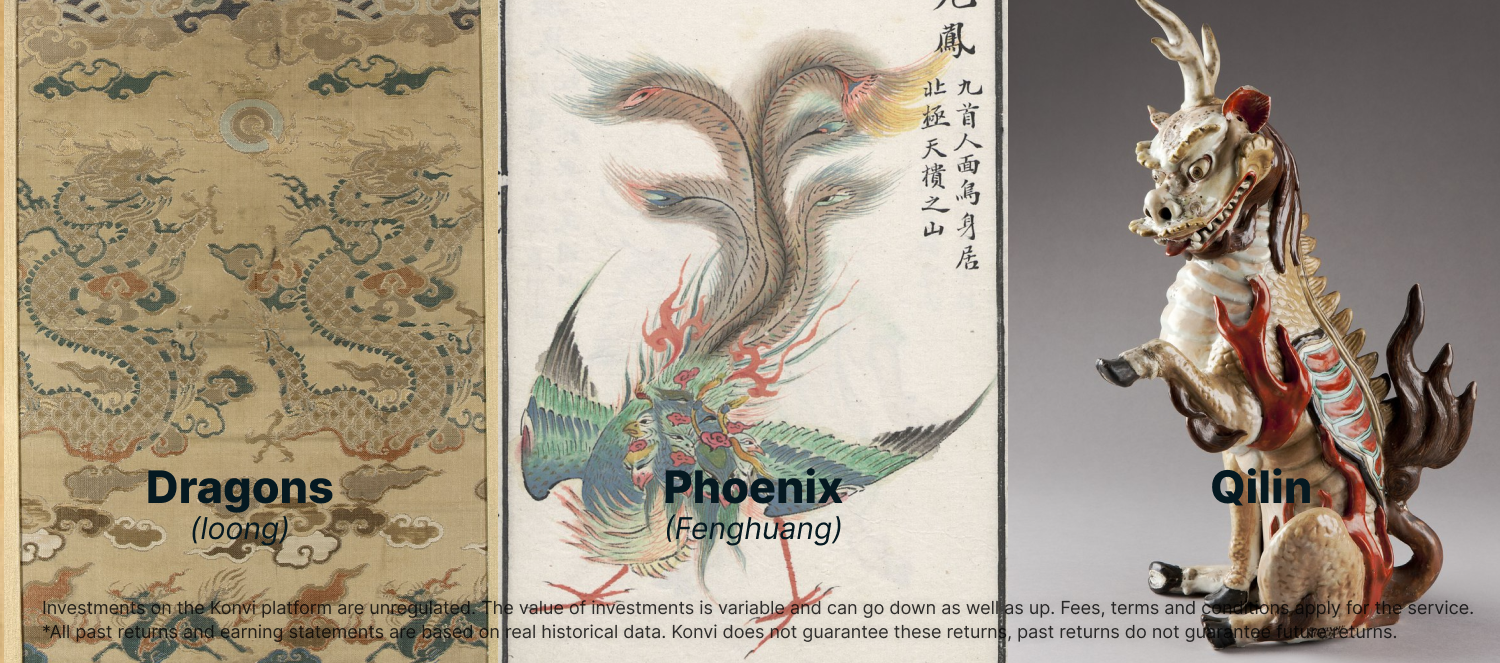
Key Categories of Collectible Ancient Chinese Artefacts
China’s long and diverse history has given rise to a remarkable range of artistic and functional objects. These artefacts offer investors and collectors unique opportunities to own pieces of cultural heritage with enduring appeal and market demand.
Porcelain Masterpieces
Chinese porcelain remains one of the most internationally recognised and culturally iconic categories of artefacts. From the cobalt-blue designs of Ming dynasty vases to the pastel famille rose enamels of the Qing period, these pieces showcase exceptional technical mastery. High-fired, durable, and beautifully painted, authentic imperial porcelain consistently commands premium prices at auction, with provenance and condition being critical drivers of value.
Beyond the auction room, Chinese porcelain has become deeply embedded in global cultural awareness. References to "priceless Ming vases" by characters in movies, TV shows, and books have turned these objects into shorthand for refined, irreplaceable luxury. This widespread recognition adds another layer to their allure, making them not just collectors' items but cultural symbols that resonate across generations and geographies.
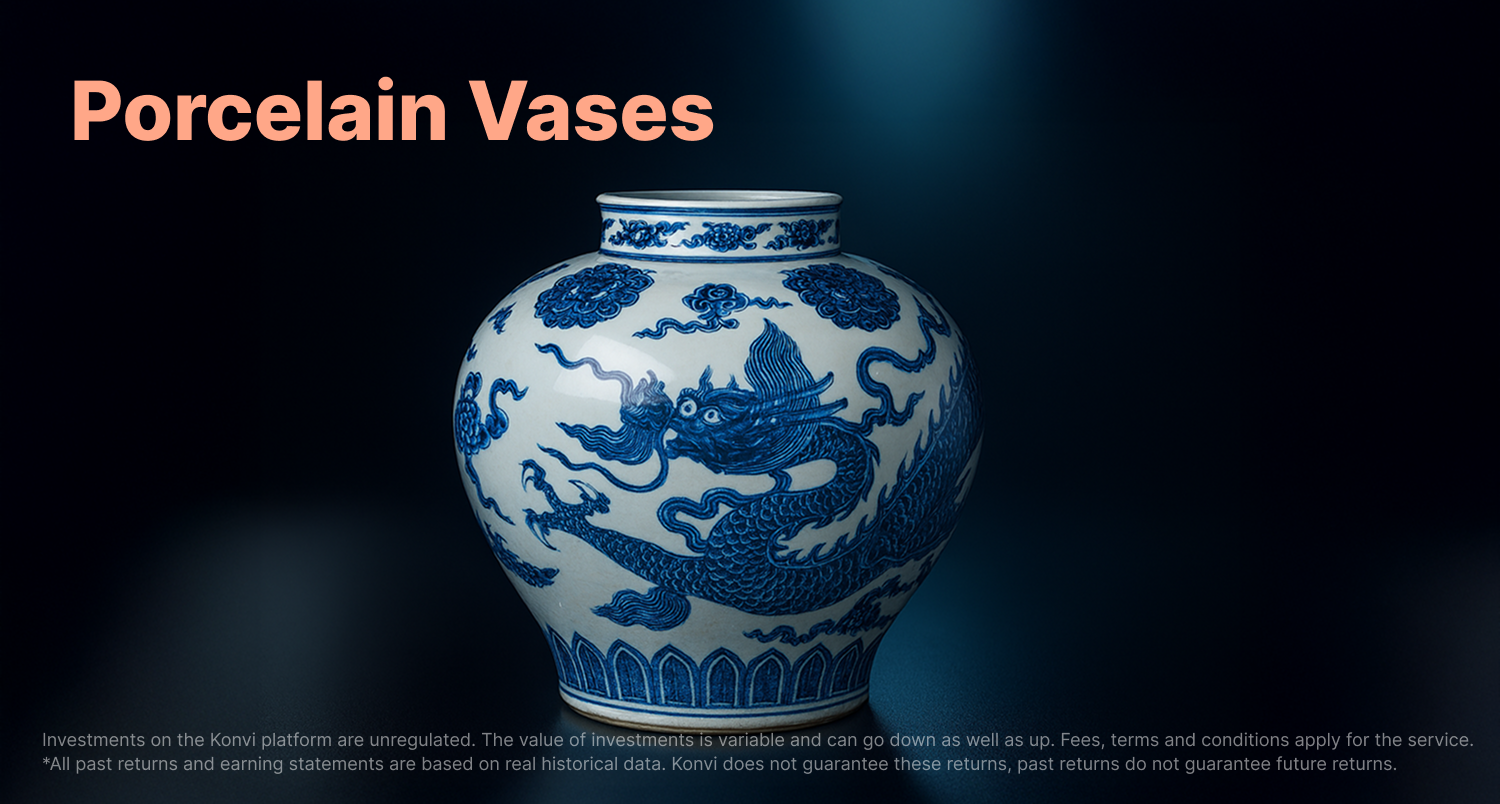
Jade Carvings
Jade holds a special place in Chinese culture, symbolising purity, virtue, and immortality. Skilled artisans transformed raw jade into ceremonial discs, jewellery, and intricate sculptures. Dynastic jade pieces are highly prized for their artistry, material quality, and cultural symbolism. Notably, the Han, Tang, and Qing dynasties are especially celebrated for their exceptional jade craftsmanship, with each period refining carving techniques and expanding symbolic motifs. Scarce, labour-intensive, and difficult to replicate, jade carvings represent a fusion of natural beauty and historical significance that continues to captivate collectors and investors alike.
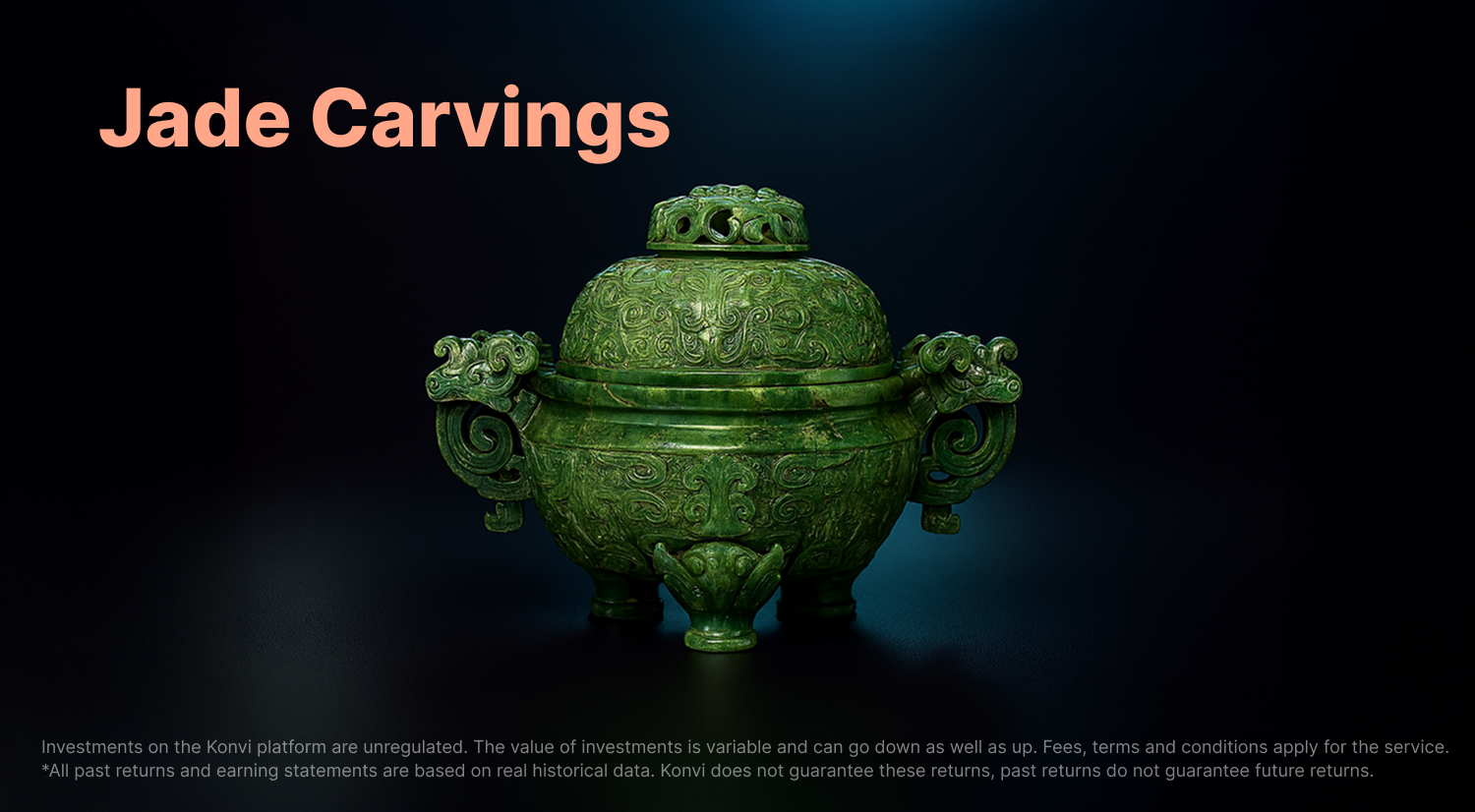
Terracotta Warriors and Funerary Art
Discovered in 1974 by local farmers near Xi’an, the Terracotta Army is one of the most famous examples of ancient Chinese funerary art. It was created to protect Emperor Qin Shi Huang, who ruled from 221 to 210 BCE as the first emperor of a unified China, in the afterlife. This vast underground army includes thousands of life-sized warriors, horses, and chariots, each uniquely detailed to reflect military ranks and regional styles.
While entire warriors are rarely sold due to their cultural significance and legal protections, related artefacts and smaller funerary figures from other dynasties remain valued for their historical context and craftsmanship, appealing to collectors who appreciate cultural storytelling and authenticity.
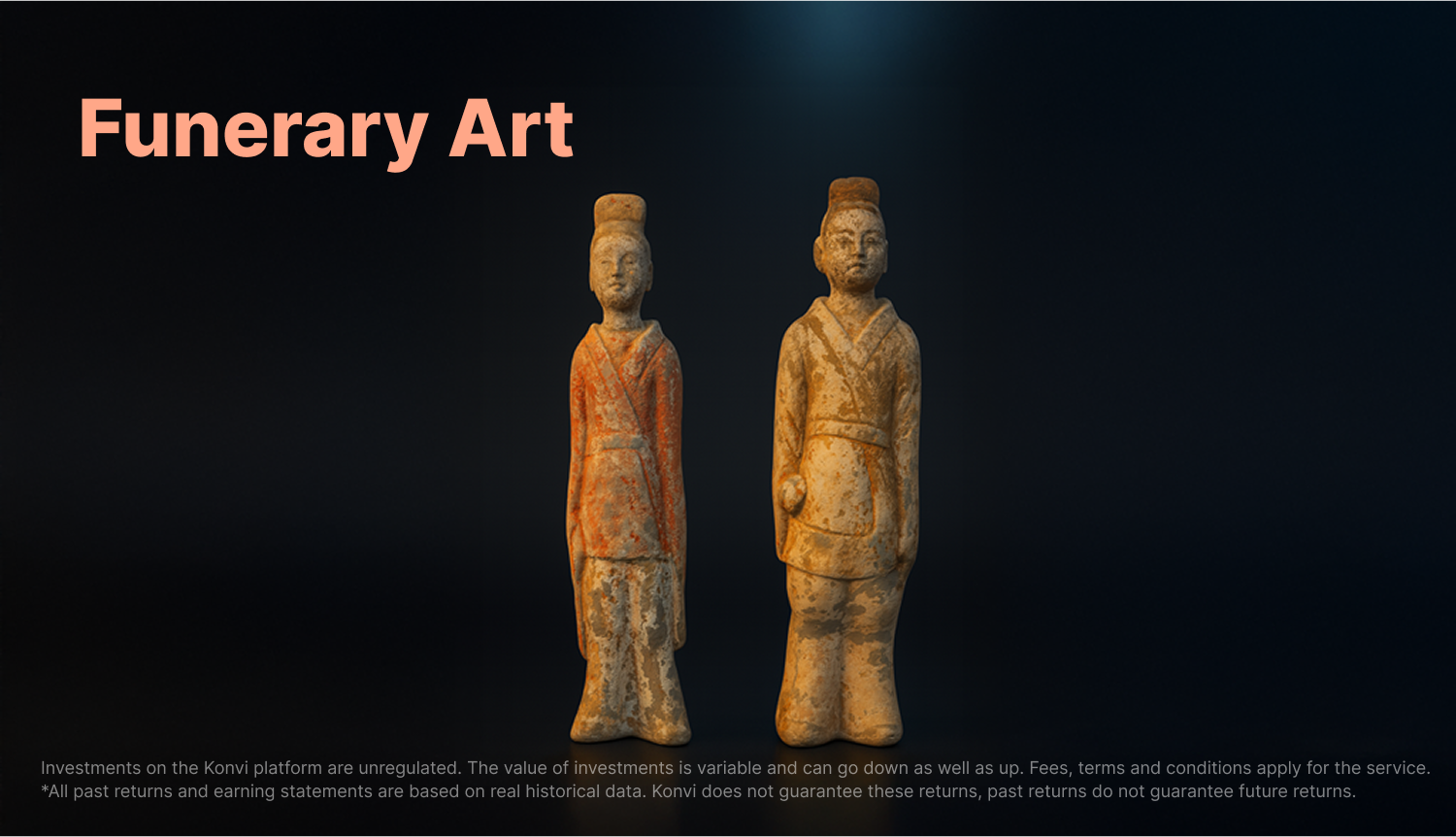
Silk Paintings and Calligraphy
Beyond three-dimensional objects, Chinese art includes delicate silk paintings and calligraphic works, which often reflect philosophical depth and scholarly tradition. Original works from imperial or renowned literati artists can command significant sums, especially when provenance is well-documented. These pieces are less about material value and more about artistic mastery and cultural prestige.
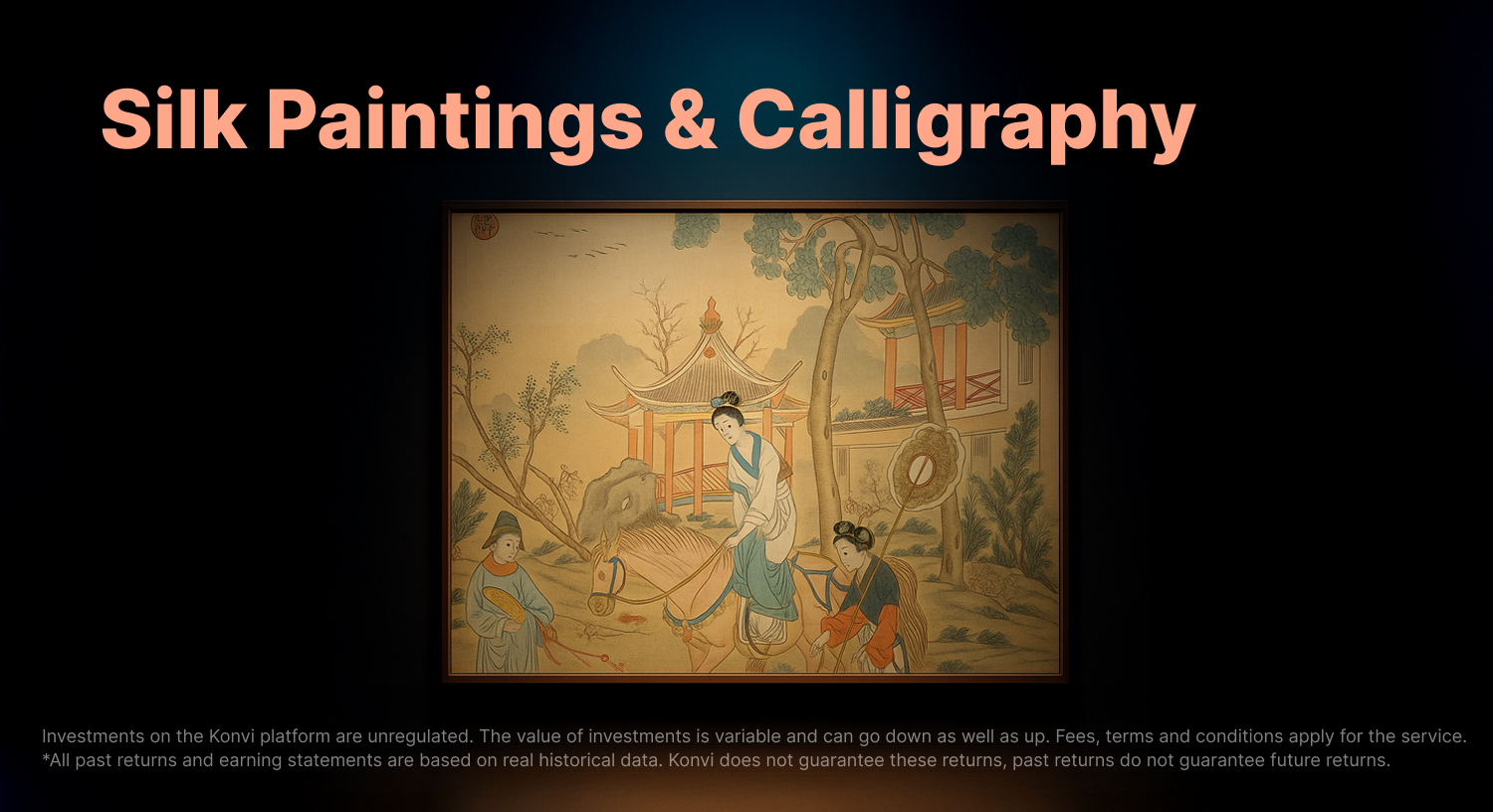
Bronze Vessels and Ritual Objects
Dating back to the Shang and Zhou dynasties, Chinese bronze vessels were used in ceremonial rituals and ancestral worship. These objects feature intricate casting techniques and symbolic motifs, making them not only archaeological treasures but also compelling collectables that embody China’s ancient spiritual practices.
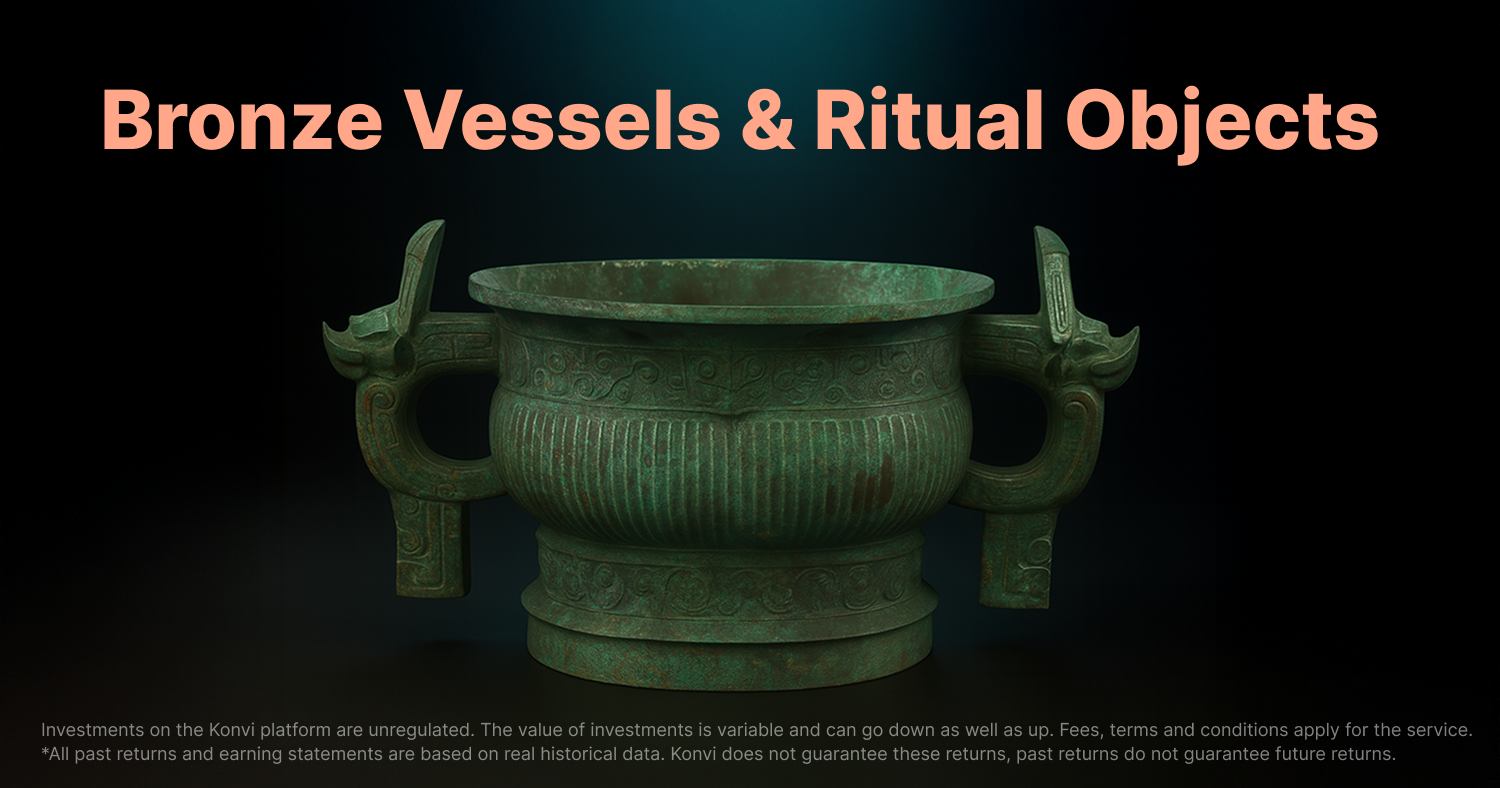
Why Ancient Chinese Artefacts Are Valuable Investments
Ancient Chinese artefacts are more than relics of a distant past. For collectors and investors, they represent tangible cultural heritage that holds enduring financial appeal. Understanding the drivers behind their value is essential for anyone considering them as part of a diversified portfolio.
Exceptional Craftsmanship and Heritage
Chinese artisans refined techniques over centuries, producing works that remain benchmarks of skill and beauty. From flawless porcelain glazes to intricate jade carvings, these artefacts are celebrated for their precision and aesthetic sophistication. Such craftsmanship is not only culturally significant but also ensures that these pieces retain appeal for future generations, supporting long-term price appreciation.
Historical Price Appreciation
Auction records show consistent demand for high-quality ancient Chinese artefacts. Ming and Qing porcelain, for example, regularly achieve six- and seven-figure results at Christie’s and Sotheby’s, with rare, imperially marked items commanding even higher premiums. Similarly, museum-quality jade pieces and bronze vessels have demonstrated strong appreciation over decades. These sales underscore the stability and growth potential of culturally significant assets.
Scarcity and Cultural Significance
Authentic, well-preserved artefacts from China’s dynastic periods are inherently scarce. Many pieces were lost to time, conflict, or historical upheaval. Surviving works often have limited production runs or unique craftsmanship that simply cannot be reproduced. This scarcity is further reinforced by the cultural importance these items hold, both within China and among global collectors who value the symbolism, philosophy, and artistry they represent.
Global Demand from Collectors
Demand for Chinese antiquities is global, with especially strong interest from collectors in mainland China, Hong Kong, and Taiwan. As economic growth expands the number of high-net-worth individuals in these regions, competition for authenticated, well-documented pieces has intensified. This demand supports the market’s resilience, even during broader economic uncertainty, making these artefacts attractive stores of value for investors seeking diversification.
Current Trends in the Ancient Chinese Artefact Market
The market for ancient Chinese artefacts has evolved significantly over the past decades. Global auction houses, shifting collector demographics, and repatriation movements all shape the landscape for investors seeking these culturally rich assets.
Rising Role of Chinese Buyers in Global Auctions
Chinese collectors have become dominant forces in the art market, particularly for pieces that reflect national heritage. Economic growth has created a substantial base of high-net-worth individuals motivated to acquire culturally significant artefacts. This demand is visible in strong auction results:
- Ming Dynasty “Chicken Cup”: In 2014, a Chenghua-period porcelain cup sold at Sotheby’s Hong Kong for HK$281.24 million (~US$36.3 million), purchased by billionaire Liu Yiqian.
- Source: Sotheby’s
- Ming Dynasty Wucai Fish Jars: Two rare Jiajing-period wucai fish jars sold at Sotheby’s Hong Kong in April 2023 for HK$74.2 million (~US$9.6 million), highlighting sustained demand for authenticated Ming porcelain.
- Source: Sotheby’s
These results underline sustained interest, particularly from buyers who see these objects as both investments and cultural heritage worth preserving or repatriating.
Trends in Repatriation and Ethical Returns
Alongside investor interest, there is growing momentum around repatriating artefacts removed during colonial periods or illicit excavations. Museums and private owners have returned Chinese antiquities to state institutions, influencing market supply and encouraging higher standards of due diligence.
This trend supports demand for artefacts with verified provenance while discouraging the trade in looted or undocumented items. It is essential for investors to consider these dynamics when assessing long-term value and marketability.
Role of Major Auction Houses
Leading auction houses such as Christie’s and Sotheby’s are critical players in establishing the market for Chinese antiquities. They ensure rigorous authentication, maintain global visibility, and offer highly curated sales that command top prices:
- Christie’s Hong Kong regularly achieves multimillion-dollar results for imperial porcelain and jade carvings, supporting a transparent, competitive market. A great example are three blue and white vases from the late 18th century, which were recently auctioned in Hong Kong.
- Sotheby’s has developed specialist Chinese art departments in Asia and Europe, increasing access for collectors and investors worldwide.
These institutions not only facilitate high-profile sales but also educate the market, build collector trust, and set benchmarks for valuation.
Ensuring Authenticity and Provenance in Chinese Artefacts
For investors considering ancient Chinese artefacts, authentication and provenance are absolutely critical. Unlike standardised financial assets, these items derive much of their value from verified history, cultural significance, and documented ownership.
The Importance of Expert Verification
Authenticating artefacts requires deep specialist knowledge. This includes analysing materials, production techniques, and stylistic details specific to dynastic periods. Major auction houses like Christie’s and Sotheby’s employ teams of experts to ensure that items meet rigorous standards before they reach the sales floor.
Investors should insist on such verification to protect both cultural integrity and market value. A well-documented provenance can significantly enhance an asset’s desirability and resale potential, giving buyers confidence in its authenticity and historical importance.
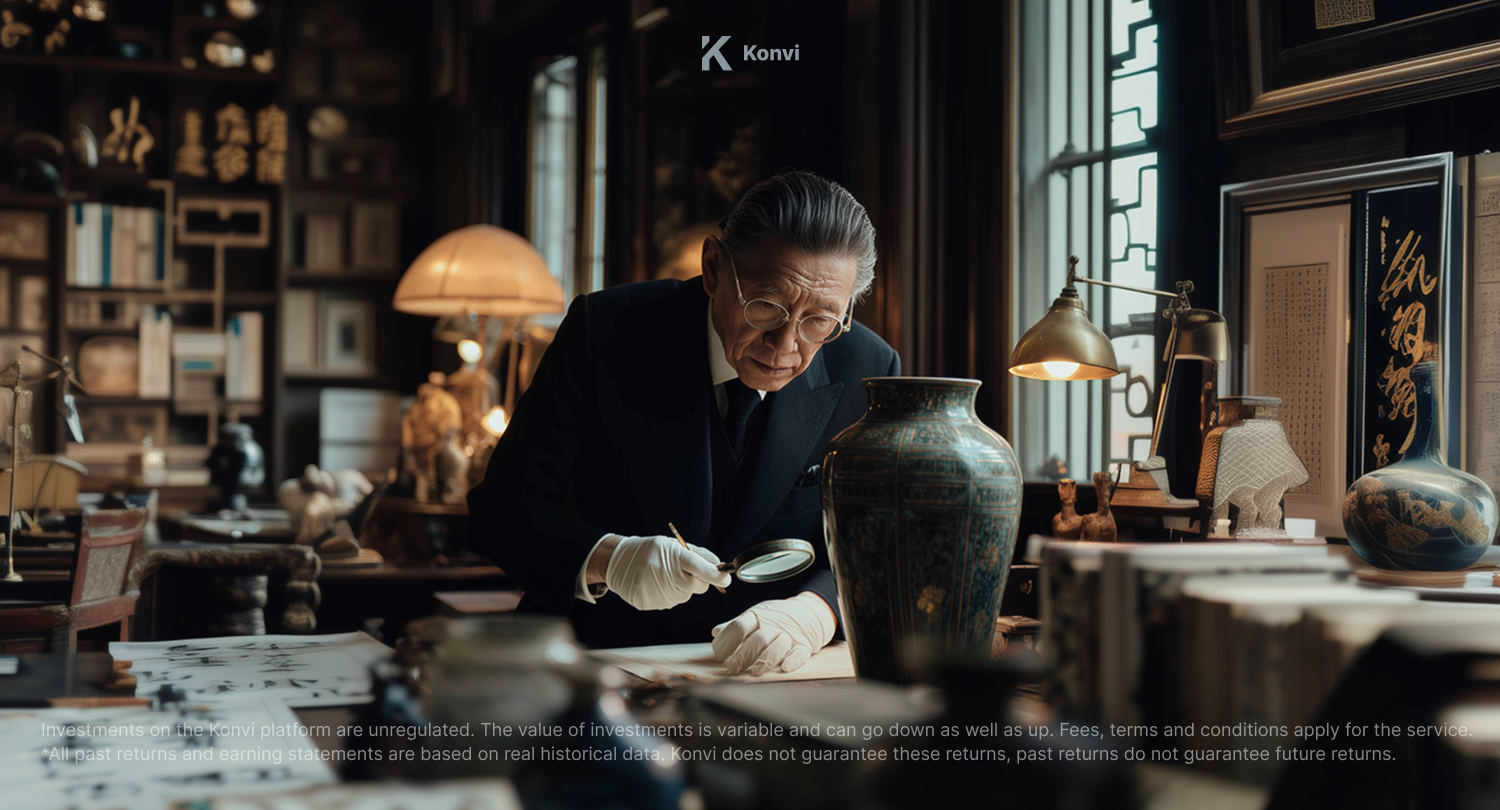
Challenges Around Looted or Fake Items
The market for Chinese antiquities has faced issues with looted or illicitly excavated artefacts, particularly during periods of political instability. These items often lack clear provenance and can become the subject of legal disputes or repatriation claims.
Counterfeiting also poses a risk. Advances in technology have made it easier to produce convincing forgeries, especially of popular categories like Ming porcelain or Qing jade carvings. This underscores the need for expert appraisal and trusted sales channels.
How Provenance Affects Value
Provenance isn’t just a formality, it’s a value driver. Artefacts with clear ownership history, documented excavation or export records, and prior inclusion in museum exhibitions or notable collections consistently command premium prices at auction. They are also less likely to encounter legal challenges, making them more liquid and attractive to a wider pool of collectors and investors.
By prioritising verified, well-documented pieces, investors can reduce risk, protect cultural heritage, and position themselves for long-term appreciation in this specialised market.
Understanding the Risks and Ethics of Investing in Ancient Artefacts
Investing in ancient Chinese artefacts offers both cultural appeal and financial potential, but it is not without complexities. Responsible investors need to understand and navigate these risks carefully to maintain the integrity of their portfolios, and their role in preserving cultural heritage. Similar to historical artefacts found from ancient Egypt, there are fundamental risks associated with historical pieces.
Some of these include:
Ownership Disputes and Repatriation Claims:
Items looted during wars or illicit excavations can face legal claims for repatriation, making thorough due diligence and clear export documentation essential.
Cultural Sensitivity and Ethical Responsibility:
Ancient artefacts are symbols of national identity, so investors should prioritise ethical sourcing to respect cultural heritage and avoid supporting illicit trade.
Political and Legal Complexities:
Cross-border sales are subject to evolving laws and export restrictions, requiring investors to stay informed and work with compliant, transparent channels.
Conclusion
Ancient Chinese artefacts occupy a unique space in the world of alternative investing. These are not merely objects of aesthetic beauty but cultural treasures that tell the story of dynasties, philosophies, and artistic mastery spanning millennia. For investors, they represent a rare blend of emotional and financial value, offering the opportunity to hold history in their hands while diversifying their portfolios with tangible, appreciating assets.
The market for these artefacts is shaped by genuine scarcity, exceptional craftsmanship, and strong global demand, particularly from Chinese buyers seeking to reclaim heritage items. Auction results from leading houses like Christie’s and Sotheby’s highlight the sustained appetite for well-documented, authenticated pieces, underscoring their long-term investment potential.
However, this space demands careful consideration. Issues of provenance, authenticity, and ethical responsibility are central to responsible collecting. Investors must prioritise expert verification, understand legal frameworks, and respect the cultural significance of what they acquire.
As Konvi launches the second chapter of its Empire Series with a focus on Ancient Chinese artefacts, it invites investors to explore this fascinating asset class with the seriousness and respect it deserves. By combining cultural appreciation with sound investment principles, these artefacts can enrich not only portfolios but also our understanding of human history and creativity.

